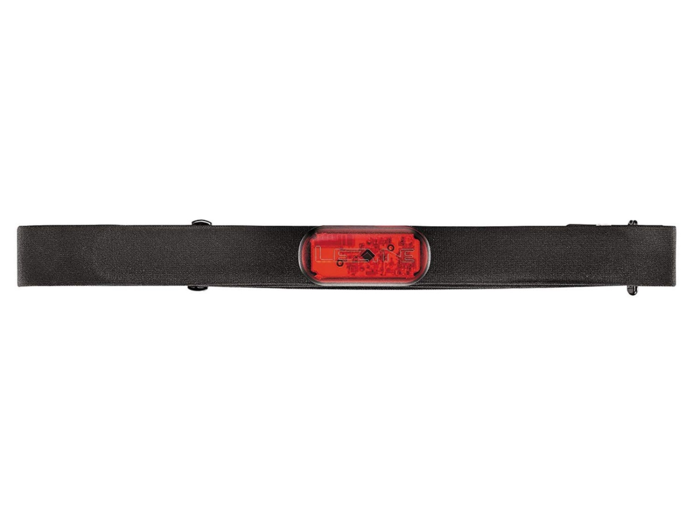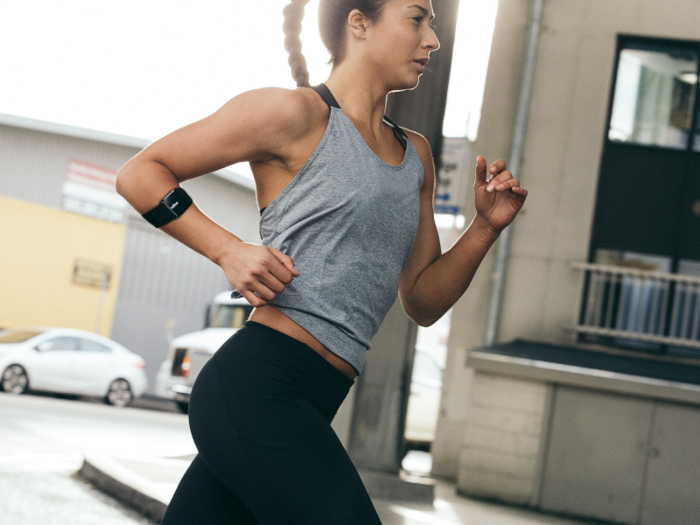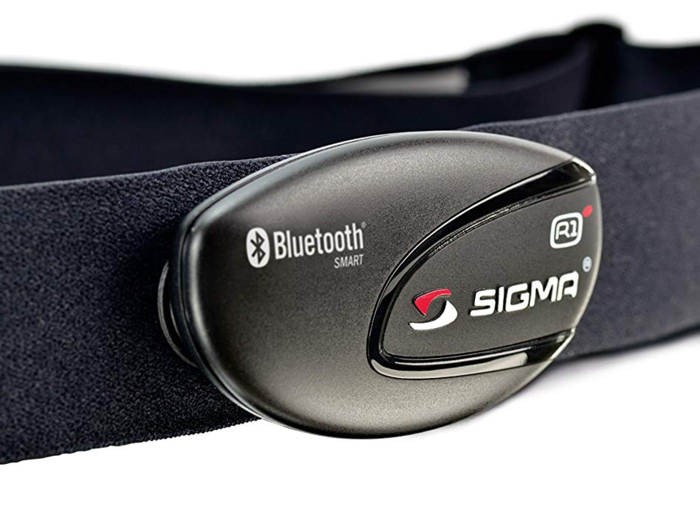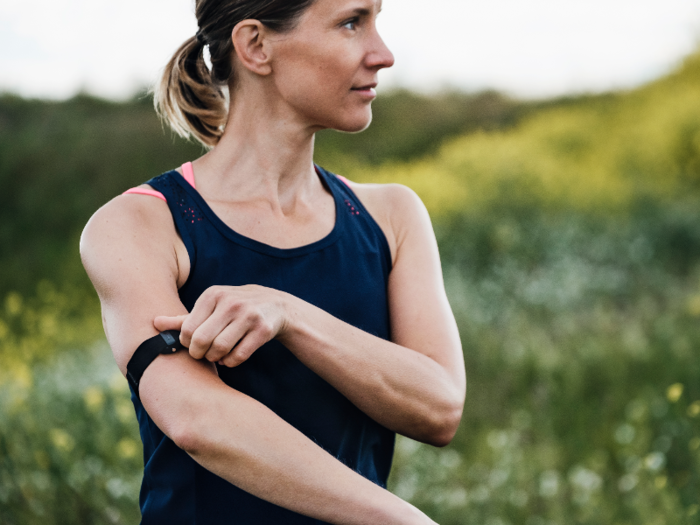- Home
- slideshows
- miscellaneous
- The best Bluetooth heart rate monitors you can buy
The best Bluetooth heart rate monitors you can buy
The best Bluetooth heart rate monitor overall

The best budget Bluetooth heart rate monitor

By the time you pay entry fees, buy sports nutrition products, and keep your bike, running shoes, and swimming gear in good shape, endurance sport isn't cheap. If your gym membership is making your credit card wince, it makes sense to save money where you can and this heart rate strap is a great area to do just that.
Lezyne's HR Flow sensor measures your heart rate and connects via Bluetooth to your phone, watch, or bike computer. The included coin-sized (CR2032) battery should last you years. It won't save your data, but the phone that it's paired to will. It might need you to moisten the strap a little to get a good reading, but that takes seconds. Lezyne advises washing the strap under running water and hanging it to dry rather than using a washing machine, but that really shouldn't take more than a minute every week or so.
Customers liked the use of a standard battery (it can be found at most stores) and the long battery life of the unit. The sizing seemed to work for everyone we tried it on, and in several weeks of use, we haven't seen a dropped connection. We did have to turn off Bluetooth on a ph0ne once, as it seemed to prevent the monitor from connecting to a bike computer, but that was a simple fix.
Considering the Lezyne strap is less than $50, it is a great budget option.
Pros: Great value, reliable data, affordable
Cons: Not ANT+ compatible
Buy the Lezyne HR Flow Sensor on Amazon for $44.99The best wrist-based Bluetooth heart rate monitor

The first generation of heart rate chest straps relied on a huge plastic connector that covered the entire rib cage and was uncomfortable to wear and virtually incompatible with a sports bra.
Modern chest straps are much improved, but some people will still find them an annoyance — not least when you get all dressed up to go training and realize you have forgotten the damn thing, forcing you to pick between spending 10 minutes undressing or forgoing valuable training data. Wahoo offers a great alternative with its Tickr Fit, which offers a reliable heart rate tracking on your forearm.
The Tickr Fit uses a breathable strap to hold an optical heart rate monitor on your forearm, similar to the optical sensors used in smart-watches. I have relatively small arms and found the smaller of the two supplied straps worked well in holding the monitor two-thirds of the way from my wrist to my elbow. Users with even smaller arms may want to try before they buy, or run the unit on their bicep as the strap isn't made of a stretchable material.
I found the connection to be incredibly reliable when used with a Wahoo bike computer and my phone. The Tickr uses Bluetooth and ANT+ so it should connect to just about anything you'd want to use to measure heart rate and, as with all Wahoo devices I've tested, it has proven extremely reliable and easy to set up.
The Tickr Fit charges with a proprietary magnetic charging station, which isn't convenient for travel but handy for quickly charging the device. The listed battery life is about 30 hours and I was able to get about that much during testing. For most people, this will be more than enough for even the longest ultramarathon.
Amazon buyers who found that their sweat was particularly damaging to chest straps loved the Tickr, while others praised its durability and accuracy compared to other wrist-mounted optical monitors. The only objection I have is that it gave me a spectacular tan line after weeks of cycling in the sun, but that is probably more of a reflection on my fair skin than the product itself.
I found it flawless in its Bluetooth and ANT+ connections and noticed that it rarely deviated more than three beats from a chest strap when used at the same time. The only reason this is not the top pick is that it is a little more expensive than chest straps that do the same thing, but if I were buying a strap this is likely the one I would pick.
Pros: More comfortable than chest straps, reliable and easy to connect it with other devices
Cons: Has to be recharged, a bit costly, leaves a weird tan line
Buy the Wahoo Tickr Fit at Amazon for $80The best Bluetooth heart rate monitor for cycling

Bike computers developed wireless connectivity before Bluetooth became the norm and as a result, they often only communicate using the ANT+ protocol. ANT+ allows for communication between devices made by different companies and, although it transmits data more slowly than Bluetooth, it is still plenty fast enough to let your bike computer know how often your ticker is thumping.
Sigma's R1 heart rate strap transmits both Bluetooth and ANT+ data, which is useful if you ride bikes and work out at the gym, if you want to pair to multiple devices for your indoor training, or perhaps because you want to track all your workouts on your phone and some on your bike computer. We tested connectivity with an iPhone, a Sigma ROX12.0 bike computer, and an ANT+ bike head unit and found that the Sigma paired without issue. Amazon purchasers reported the same results and were impressed with the strap's sturdy construction.
I did find the Sigma strap tended to pull on my chest a little more than other chest straps here, so readers with less-than-smooth chests might want to be wary. I found the data to be extremely accurate compared with other monitors and never had any issues with connecting to devices ranging from Sigma's own excellent ROX 12.0 bike computer to smartphones and other brands' watches and bike head units.
The Sigma R1 is one of the cheaper units we reviewed. It works well and unobtrusively and doesn't need charging, interaction with an app, turning on and off, or any of the other frustrating things that other sensors require. If you prefer monitoring heart rate on your arm, or have sensitive skin, it might be a little painful but otherwise, the Sigma is a great choice for a variety of sports and activities.
Pros: Pairs with everything, great value, ANT+ and Bluetooth
Cons: Can be painful against the skin
Buy the Sigma R1 Duo on Amazon for $45.98The best Bluetooth heart rate monitor with internal memory

When exercising intensely, you may not want your thousand-dollar phone in your pocket as you flip tires or climb walls. If this is you, the Polar OH1 is the best heart rate monitor.
Unlike other monitors here, the OH1 has internal memory, meaning you don't need a watch, phone, or bike computer to store your heart rate data. In events like obstacle racing, it's useful to have a record of your exertion — especially if you track your training carefully — but any phone or watch is not going to survive the first 10 minutes of a muddy assault course.
The OH1 is the perfect solution: It's lightweight, arm mounted, and perfectly capable of connecting to a phone or other device if you want to use it like any of the other straps here. At $79.99 it isn't much of an upcharge for having the ability to store 200 hours of workout data on this tiny strap.
Like the Wahoo, the Polar sensor uses optical monitoring to measure heart rate on your arm. It uses a soft strap that, I found, best stayed in place when secured snugly on my upper arm. As with most of the optical systems I tested, I did have to use a bit of trial and error to find a place where the sensor stayed put and recorded accurately.
The bundled app is required to start the sensor for the first time and features a lot of interesting data-analysis tools, such as quantifying training load and calorie burn. The sensor itself is small and unobtrusive — far less bothersome than some other data storing monitors I tested. It's easy to set up the OH1 to either record and transmit or just transmit. Amazon buyers loved the accuracy and ease of use of the OH1.
All this data storage and connectivity do come at a cost: The OH1 delivers only 12 hours of use per battery charge. Most of us aren't exercising for that long, but it means that if you travel or simply tend to forget to charge your strap, you might find yourself missing the data you want. As DC Rainmaker noted, the Polar charger, which plugs directly into a USB power adapter, can be a bit fiddly to use; it is very compact, so you can travel with it.
The OH1 also doesn't support ANT+, which won't be an issue for most but if you use a bike computer and want to pick up heart rate, you should check that the computer has Bluetooth compatibility.
Is the OH1 for you? If you do obstacle course racing or prefer to keep your workout and your phone apart, then absolutely. But if you can't think of why you'd want your strap to store data when you just want to see your heart rate on your phone or bike computer, then you'd be better served with a strap with longer battery life.
Pros: Unobtrusive and accurate, stores up to 200 hours of data
Cons: Battery life, charger a bit awkward to use
Buy the polar OH-1 on Amazon for $79.93Advertisement